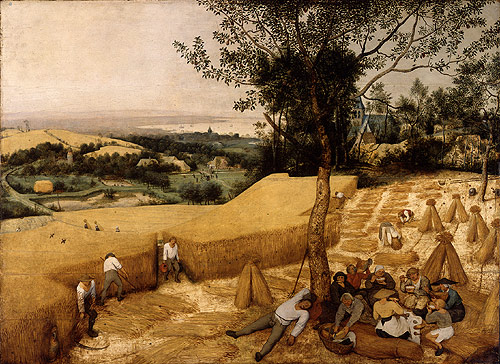The last of this year’s summer pictures is The Harvesters, by Pieter Bruegel the Elder, one of a series of depictions of the months of the year which the artist painted for the Antwerp merchant Nicolaes Jongelinck in 1565. Of the five surviving pictures from that series, three are to be found in the breathtaking room of Bruegel’s work in the Kunsthistorisches Museum in Vienna, while one more is in the National Gallery at Prague. The picture reproduced on this page is the only one in America. It can be seen in the Metropolitan Museum of Art in New York, which purchased the work in romantically unusual circumstances in 1917.
Having disappeared from the Viennese imperial art collection, probably during the Napoleonic wars, the painting had been presumed lost until it turned up in New York in that year, in the possession of a tubercular young man from Belgium named Paul Jean Cels. Anxious to join his fiance in Australia, and not realising that he had in his possession a lost treasure of Northern European Renaissance painting, he offered the picture for a fraction of its true value to Bryson Burroughs, the Metropolitan Museum’s Curator of Paintings. Burroughs purchased the grubby, time-smoked panel, more in a spirit of curiosity than optimism, while Cels continued to Australia, where he died shortly afterwards, too soon even to take delivery of the small remittance sent on by the museum. When Burroughs had the picture cleaned, he discovered not only all the qualities of an autograph Bruegel but also the painter’s signature, inscribed near the bottom of the work in capital letters. The dream of finding more survivors from the series persists – the plot of Michael Frayn’s recent comic novel Headlong, for example, turns on the discovery and accidental incineration of...


